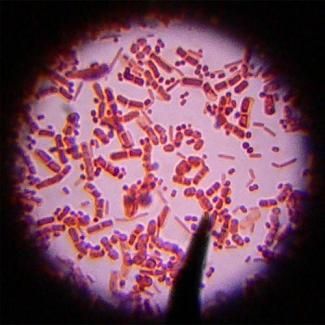- Home
- Medical news & Guidelines
- Anesthesiology
- Cardiology and CTVS
- Critical Care
- Dentistry
- Dermatology
- Diabetes and Endocrinology
- ENT
- Gastroenterology
- Medicine
- Nephrology
- Neurology
- Obstretics-Gynaecology
- Oncology
- Ophthalmology
- Orthopaedics
- Pediatrics-Neonatology
- Psychiatry
- Pulmonology
- Radiology
- Surgery
- Urology
- Laboratory Medicine
- Diet
- Nursing
- Paramedical
- Physiotherapy
- Health news
- Fact Check
- Bone Health Fact Check
- Brain Health Fact Check
- Cancer Related Fact Check
- Child Care Fact Check
- Dental and oral health fact check
- Diabetes and metabolic health fact check
- Diet and Nutrition Fact Check
- Eye and ENT Care Fact Check
- Fitness fact check
- Gut health fact check
- Heart health fact check
- Kidney health fact check
- Medical education fact check
- Men's health fact check
- Respiratory fact check
- Skin and hair care fact check
- Vaccine and Immunization fact check
- Women's health fact check
- AYUSH
- State News
- Andaman and Nicobar Islands
- Andhra Pradesh
- Arunachal Pradesh
- Assam
- Bihar
- Chandigarh
- Chattisgarh
- Dadra and Nagar Haveli
- Daman and Diu
- Delhi
- Goa
- Gujarat
- Haryana
- Himachal Pradesh
- Jammu & Kashmir
- Jharkhand
- Karnataka
- Kerala
- Ladakh
- Lakshadweep
- Madhya Pradesh
- Maharashtra
- Manipur
- Meghalaya
- Mizoram
- Nagaland
- Odisha
- Puducherry
- Punjab
- Rajasthan
- Sikkim
- Tamil Nadu
- Telangana
- Tripura
- Uttar Pradesh
- Uttrakhand
- West Bengal
- Medical Education
- Industry
Vaginal bacteria that can protect women from HIV

New York: Researchers have identified a type of vaginal bacteria that can protect women from the human immunodeficiency virus (HIV) as well as other sexually transmitted infections.
The vaginal microbiota has long been considered healthy if it was dominated by any species of lactobacillus, said senior author of the study Sam Lai, assistant professor at Eshelman School of Pharmacy, University of North Carolina at Chapel Hill in the US.
The researchers found that a specific species of lactobacillus -- lactobacillus crispatus -- appears to play a key role in sustaining the mucus barrier against HIV and other sexually transmitted infections.
The findings, Lai said, that could lead to the development of new strategies to protect women against HIV.
"What we discovered is that a woman's risk of being infected by HIV can be affected by the type of helpful bacteria present in vaginal mucus," Lai said.
The research team examined mucus from 31 women of reproductive age using high-resolution, time-lapse microscopy to test whether fluorescent HIV pseudovirus particles became trapped in the mucus or spread freely.
The researchers observed two distinct types of mucus samples: one that was very good at trapping HIV and one that did not.
Trapping of HIV did not correlate to the mucus' pH, total lactic acid, or Nugent score, which is a rough measure of vaginal health that reflects how much lactobacillus bacteria is present compared to other microbes.
However, one difference between the two groups did stand out: higher levels of D-lactic acid in the group that trapped HIV.
Humans cannot make D-lactic acid, so the team suspected that bacteria living within the mucus layer were responsible for the difference.
The researchers found that mucus that trapped HIV had predominantly lactobacillus crispatus.
The findings were published in mBio, the online open-access journal of the American Society for Microbiology.
IANS
The vaginal microbiota has long been considered healthy if it was dominated by any species of lactobacillus, said senior author of the study Sam Lai, assistant professor at Eshelman School of Pharmacy, University of North Carolina at Chapel Hill in the US.
The researchers found that a specific species of lactobacillus -- lactobacillus crispatus -- appears to play a key role in sustaining the mucus barrier against HIV and other sexually transmitted infections.
The findings, Lai said, that could lead to the development of new strategies to protect women against HIV.
"What we discovered is that a woman's risk of being infected by HIV can be affected by the type of helpful bacteria present in vaginal mucus," Lai said.
The research team examined mucus from 31 women of reproductive age using high-resolution, time-lapse microscopy to test whether fluorescent HIV pseudovirus particles became trapped in the mucus or spread freely.
The researchers observed two distinct types of mucus samples: one that was very good at trapping HIV and one that did not.
Trapping of HIV did not correlate to the mucus' pH, total lactic acid, or Nugent score, which is a rough measure of vaginal health that reflects how much lactobacillus bacteria is present compared to other microbes.
However, one difference between the two groups did stand out: higher levels of D-lactic acid in the group that trapped HIV.
Humans cannot make D-lactic acid, so the team suspected that bacteria living within the mucus layer were responsible for the difference.
The researchers found that mucus that trapped HIV had predominantly lactobacillus crispatus.
The findings were published in mBio, the online open-access journal of the American Society for Microbiology.
IANS
Meghna A Singhania is the founder and Editor-in-Chief at Medical Dialogues. An Economics graduate from Delhi University and a post graduate from London School of Economics and Political Science, her key research interest lies in health economics, and policy making in health and medical sector in the country. She is a member of the Association of Healthcare Journalists. She can be contacted at meghna@medicaldialogues.in. Contact no. 011-43720751
Next Story


